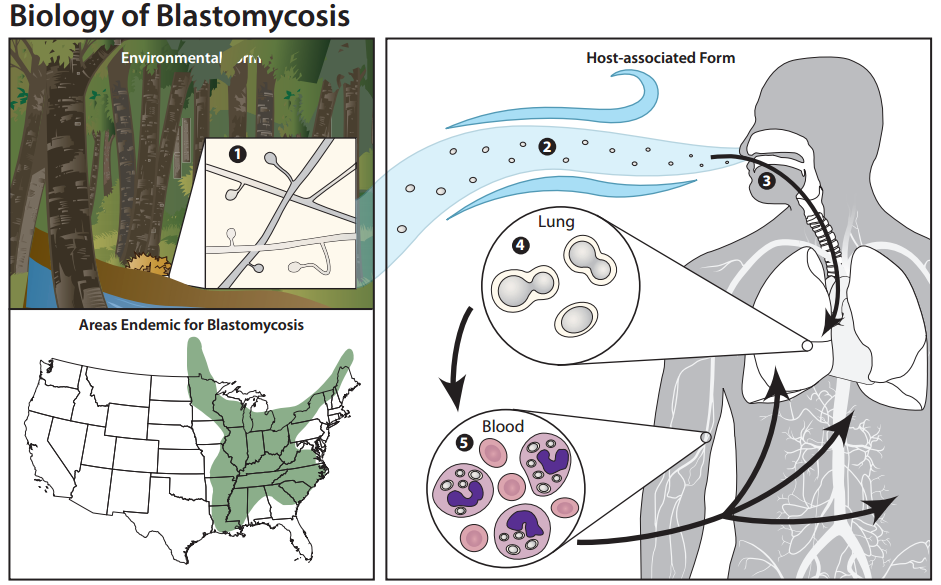While there is no national surveillance of blastomycosis in the US, Wisconsin is one of several states in which the fungal infection is reportable. The Centers for Disease Control and Prevention (CDC) says in endemic (regularly found among particular people or in a certain area) areas, the yearly incidence of blastomycosis is approximately 1 to 2 cases per 100,000 people.
The latest information from the Wisconsin Department of Health Services on the current outbreak among people who visited the Little Wolf River in Waupaca County near New London show the number of confirmed cases of blastomycosis now at 26. Another 22 probable cases are also being investigated.

What is Blastomyces dermatitidis?
Blastomyces dermatitidis is a fungus lives in moist soil and in association with decomposing organic matter such as wood and leaves. Blastomycosis is a fungal infection usually acquired by breathing in the spores of the fungus. Blastomycosis cannot be spread from person to person or from animals to people.
Blastomyces dermatitidis is considered a dimorphic fungi- In the environment it exists as a mold with septate aerial hyphae. The hyphae produce conidial spores, which is the source of infection in humans by inhalation. In the body, B. dermatitidis takes the form of a broad-based budding yeast. The yeast may continue to colonize the lungs or disseminate in the bloodstream to other parts of the body, such as the skin, bones and joints, organs, and central nervous system.
Blastomyces dermatitidis can be found throughout the world, but is most common in parts of North, Central, and South America. In the United States, the fungus is endemic in the Southeast and the Midwest.
The time between exposure to the spores and when symptoms develop varies widely, ranging from 21 to 100 days. About 50% of infections are asymptomatic (no symptoms).
When symptoms of blastomycosis are present, they may include: Fever, cough, or cough with blood, shortness of breath, muscle aches, bone pain, back pain, chest pain, fatigue, weight loss, chills and/or night sweats and skin sores.
Blastomyces dermatitidis can be treated with the use of anti-fungal drugs. The CDC says for people with mild or moderate infections, itraconazole is commonly used. People with more severe infections may require more aggressive treatment with amphotericin B. Newer triazole antifungal medications, such as voriconazole and posaconazole, are also available, but their role in treating blastomycosis is still being determined.
Robert Herriman is a microbiologist and the Editor-in-Chief of Outbreak News Today
Follow @bactiman63


2 thoughts on “Wisconsin Blastomycosis outbreak update; What is Blastomyces dermatitidis?”